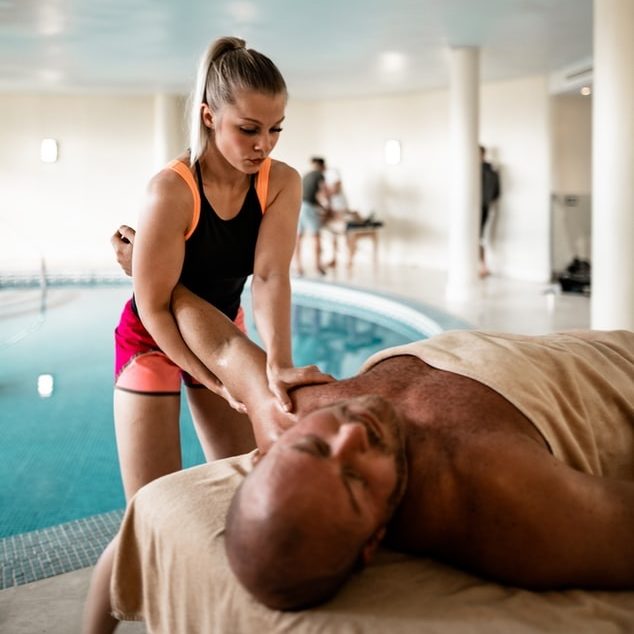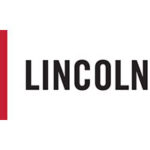Massage therapists treat clients by using touch – mainly hands and elbows – to manipulate the muscles and other soft tissues of the body.
The purpose of massage therapy varies with each patient, but tends to focus on relieving pain, helping rehabilitate injuries, reducing stress, increasing relaxation, and improving the general wellness of your clients.

You can work in a spa, health clinic, doctors’ office, hotel, and gyms and fitness centers. When you’re self-employed and just starting out, you might want to offer on-call mobile service where you travel to the client’s home or place of business. The start-up costs of running a mobile massage therapy service are virtually nonexistent – just the cost of your massage table and other equipment, plus a dependable vehicle to get you where you’re going.
Massage therapists typically complete a postsecondary education program of 500 or more hours of study and experience, although standards and requirements vary by state. Most states regulate massage therapy and require these therapists to have a certification that provides proof of proper training. Only a few states mandate a formal license. You’ll still want to get training and certification to establish yourself as a credentialed professional. That will make your services more attractive to new clients when they are evaluating which massage therapist to work with.
Most of all, you’ll earn a good living while enjoying the professional satisfaction of helping people feel better as you assist in improving their quality of life.
Read on to find out how you can become a massage therapist.
In this article you’ll learn:
- How much money you can make as a massage therapist
- The required training and certifications
- Professional groups to join
- Employment opportunities for massage therapists
- Finding clients
- Plus helpful tips
How much money can you make?
Massage therapists on average earn $42,820 per year, according to the US Bureau of Labor Statistics. This works out to about $20.60 per hour.

The employment outlook for massage therapists is projected to grow 22 percent through 2028, the bureau reports. This will be much faster than the average for all occupations. Demand will likely increase as more healthcare providers understand the benefits of massage and these services become part of treatment plans.
Opening your own massage spa can significantly boost your income as a result of self-employment. Still, many massage therapists start out working for a spa or private health facility before jumping into the world of an entrepreneur and all the attendant expenses that come with running your own business.
Training and Certification
You do not currently need a license to be a massage therapist in Wyoming, Minnesota, or Kansas. That can obviously change any time as state legislatures devote a portion of every year to creating new laws and regulations. For up-to-date state licensing requirements, check-out this article.
Even in a state where you do not need a license, you should become trained and certified, anyway. Why? Simple psychology. Someone who can benefit from massage therapy will almost always choose a trained and certified professional if given the option. Wouldn’t you?

According to the ABMP (Associated Bodywork & Massage Professionals) bi-annual census of all state-approved massage programs for 2020, there are 919 state approved massage programs in the United States. You should have no trouble finding a program suitable for your needs.
A massage therapist typically begins work after completing a postsecondary non-degree program of around 500 Hours. Practical and technical aspects of the practice are introduced during this training. Most massage therapy education incorporates theoretical knowledge with practical experience in either classroom or face-to-face instruction as well as online studies. Client engagement and business principles are also taught.
You can also choose to specialize in different therapeutic techniques. These include Swedish massage, biodynamic massage and sports massage. Broadly speaking, your training will involve learning how to massage specific muscles in different areas of the body to produce maximum benefits. Anatomy and physiology are also topics covered in coursework.
States that regulate massage therapy will require a passing score on the Massage and Bodywork Licensing Exam. Often, you’ll need to earn continuing education credits to maintain and renew your massage therapy license or certificate.
Here’s an extensive list of massage therapist schools and training programs.
Professional Groups to Join
Associated Bodywork & Massage Professionals is a national membership association that offers much more than great liability insurance to make it simpler for massage and bodywork practitioners and students to succeed. Membership starts at $199 per year. ABMP has distinguished itself for two main reasons:
- ABMP’s comprehensive program of liability and business property insurance is considered the standard for the profession. Specifically created to address the needs of massage therapists and bodyworkers, the policy included with membership offers “occurrence form” coverage; professional, general, and product liability coverage with the highest limits available; no additional fee for Additional Insured Endorsements; and no “shared member” charges, like some other associations. In sum, it’s quality insurance coverage.
- ABMP members get the most responsive, knowledgeable service and a comprehensive package of member benefits that incorporates free continuing education hours, member discounts, a free business website, Massage and Bodywork magazine, legislative advocacy and more.
Check-out the ABMP PocketSuite Edition here.

The American Massage Therapy Association is the largest nonprofit professional organization serving massage therapists, students and massage schools. The association is directed by volunteer leadership and fosters ongoing, direct member involvement through 51 chapters. AMTA advances the profession through ethics and standards, the promotion of fair and consistent licensing of massage therapists, and public education on the benefits of therapeutic massage. A professional membership is $235 per year.
National Association of Complementary and Alternative Medicines is an organization that serves health, wellness, and beauty professionals by giving support, marketing materials, state licensing and insurance requirements, and access to liability insurance for massage therapists.
Employment
You’ll find work as a massage therapist in health and beauty spas, physicians’ offices, public and private gyms and fitness centers, as well as hospitals and medical clinics.

Most employers will ask for proof of licensure, if required in your state, and academic/training credentials and certifications, so you should make photocopies to hand out with your résumé. Call the business where you are interested in working and ask if it will be okay for you to drop off your materials in person. If they prefer that you mail your information, always follow up with a phone call within a week.
Use the networking power of your professional memberships to find jobs.
Check online sites such as Indeed.com and Ziprecruiter, which can yield job openings, but keep in mind that laws regulating massage therapy will vary from state-to-state. If you move to another state, you’ll have to meet their requirements to practice. With some online services, you can set up a notification to receive a daily email with job openings in the areas you’ve selected.
Finding Clients
Business cards and a basic website should be the core of your marketing toolkit as a massage therapist. The website need not be fancy or expensive, just attractively designed, with photos of your studio or salon (get permission from any customers who are visibly recognizable). The website must also include your business location and contact information at the top of every page.

In addition to your business website, the next thing to do is create an Instagram account to showcase your massage therapy practice. Instagram is the #1 online venue for creative professionals to promote themselves. It’s a free marketing tool that’s always working on your behalf.
Next, set up a Facebook page for your massage therapy practice so that people searching for this therapy can find you. This, too, is a free service that can benefit your business by putting you front-and-center of potentially thousands of customers.
Other strategies for attracting new business:
- Create a referral program with discounts for returning customers who bring new clients to you.
- Ask customers to review your services online. According to a recent survey, 90% of people say their buying decisions are influenced by positive online reviews.
Good to know:
Beyond the fundamentals of finding clients, here are additional tips you can use to market your massage therapy practice at little expense to you.
Mail some postcards
Target neighborhoods close to your location with an introductory postcard offering a discount for new customers. Learn more about USPS bulk mailing tools and services here.
Work your contact list via email
Stay in touch with your clients, especially those you haven’t seen in a while. Consider offering a “we miss you” special as an incentive to get return business.
Host an Open House
Advertise an afternoon of free Q&A and a tour of your facility. Create a visually appealing flyer and post it on community bulletin boards, at libraries, medical offices, fitness centers and apartment complexes. List the event on all your online sites as well. Complimentary bottled water and cookies or some other inexpensive treat create an inviting atmosphere. You could even offer free massage sessions as door prizes.

Create a loyal customer rewards program
Offer a discount or free massage after a customer completes a certain number of sessions. When customers have a goal to get a freebie, they tend to stick around.
Offer package deals
You can set up an agreement with a beauty spa or salon to offer a special price on a suite of services. The customer buys the package and you get the money up-front.
Take appointments online
Use the PocketSuite app to schedule your clients, create invoices and get paid. It’s easy.
Write a regular blog
Post articles about the health benefits of your massage therapy, as well as helpful advice on exercise, diet and anything else related to your business that customers would find useful. This builds up your expertise and over time makes you a go-to authority on massage therapy. That’s good for business.
Offer mobile services
You and your massage table travel to the customer. It’s so easy for clients to say “yes” when they don’t have to do anything or go anywhere to get a therapeutic massage.
If you enjoyed this article, check out some more great PocketSuite.io content that can help you grow your career as a massage therapist. Here’s a great place to start.PocketSuite has thousands of business owners who all started where you are right now. Our community is always happy to help you ramp up, grow your client base, and achieve your income goals, both within the PocketSuite app and as part of our exclusive Facebook Community Group. PocketSuite’s vision is for any professional to be able to work for themselves and make a great living. It starts here. It starts with you. It starts today. Let’s get started, download PocketSuite now! Feel free to reach out with any questions (we’d love to hear from you)! Text us @ (415) 841-2300.



